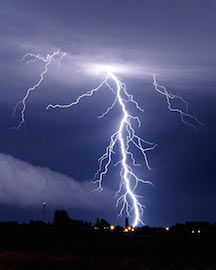 While winter may finally be over, it doesn’t mean we’re done with bad weather. If you’ve ever hydroplaned through a large puddle or been caught in a rain storm so strong you can barely see the road in front of you, you know what it’s like to lose control, even for a second. It isn’t fun, and it isn’t safe. Here are some tips to help you safely combat bad weather when you’re behind the wheel.
While winter may finally be over, it doesn’t mean we’re done with bad weather. If you’ve ever hydroplaned through a large puddle or been caught in a rain storm so strong you can barely see the road in front of you, you know what it’s like to lose control, even for a second. It isn’t fun, and it isn’t safe. Here are some tips to help you safely combat bad weather when you’re behind the wheel.
No matter what bad conditions you’re heading into, make sure your car is road worthy. Before heading out into bad weather, make sure your car is ready for the challenge. Alex Deborgoorski, a driver from the show Ice Road Truckers, recommends replacing windshield wipers that have cracked rubber and cleaning headlight covers that have become yellow and cloudy. You should also ensure that your tires are good to go, meaning they have enough air and the right amount of tread.
When driving in fog…
- Switch on fog lights if you have them.
- Before entering a fog bank, pump your brakes a few times to alert cars behind you; not pumping your brakes could result in you being hit from behind if other drivers can’t see you.
When driving in rain…
- Slow down. Vision is restricted in the rain, and going your normal speed may be hazardous. In addition, you have to worry about hydroplaning.
- Do not drive through standing water. Puddles are one thing, but when you can’t see the road, don’t drive through the water. It’s hard to gauge how deep the water is, and not only could it damage your car, it could be dangerous to your well being.
- “Immediately after you’ve driving through a puddle, take your foot off the gas and feather the brakes. This creates heat and friction, which will help dry the brakes,” advises Alex Deborgoorski.
When driving in snow and/or ice…
- Keep your gas tank half full, at minimum, to keep your gas line from freezing up.
- Slow down. Vision is restricted in the snow. Plus, accelerating and decelerating too quickly can cause skidding.
- Don’t follow too closely. Normally, it is recommended that you allow three to four seconds of space between you and the vehicle in front of you; however, in the snow, AAA recommends that you increase this to eight to ten seconds.
- Consider keeping a bag of sand, salt, or cat litter in your trunk during snowy/icy months. Dumping a little of any of these substances under your wheels can help you get the traction you need to get moving.
- Avoid using cruse control on slippery or wet surfaces.
If you get into a car accident in bad weather and are injured because of the carelessness of another driver, make sure to contact an experienced St. Louis personal injury attorney about your options.

